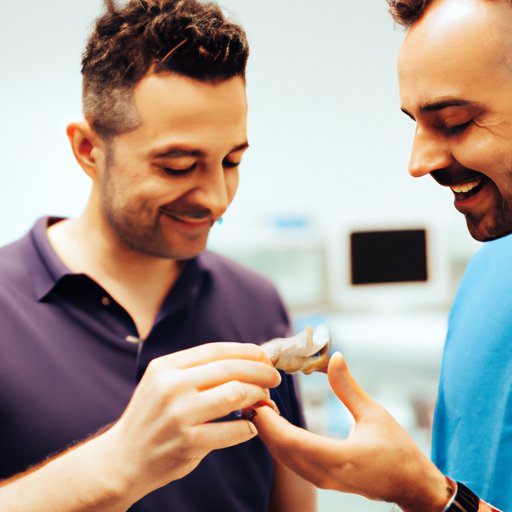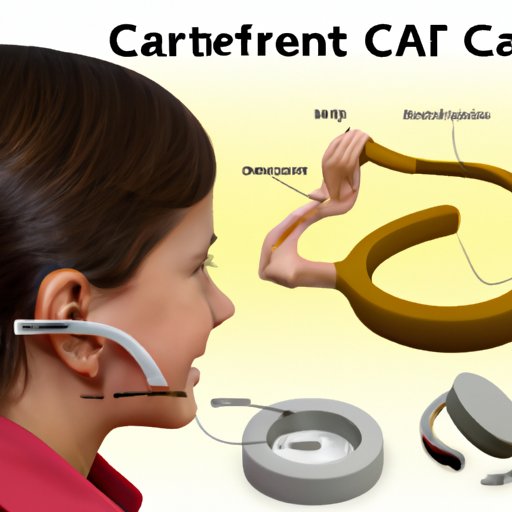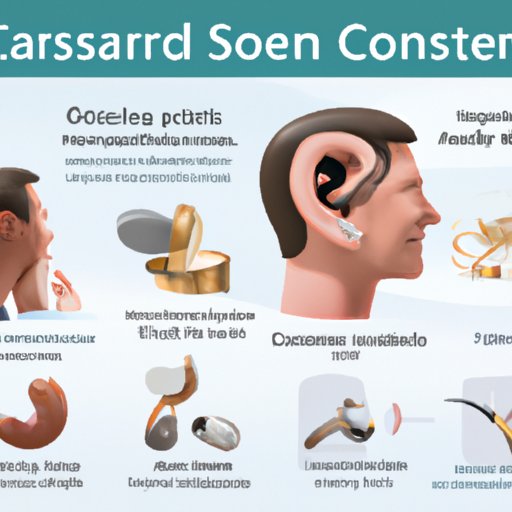Introduction
Cochlear implants are a revolutionary technology that has helped millions of people with severe to profound hearing loss experience the world of sound. This article will provide an overview of how this technology works, examining the different components of a cochlear implant, exploring how it is programmed to work, and examining the benefits and limitations of this device. In addition, the article will feature interviews with individuals who have received a cochlear implant, providing insight into their experiences before and after surgery, the challenges they faced in adjusting to the device, and their advice for those considering an implant.
Explaining the Different Components of a Cochlear Implant
A cochlear implant is made up of several parts: a microphone, a transmitter, a receiver, and electrodes. The microphone picks up sound waves and sends them to the transmitter. The transmitter changes these sound waves into electrical signals, which are then sent to the receiver. The receiver is implanted under the skin behind the ear and is connected to the electrodes, which are placed inside the cochlea.

Exploring How an Implant is Programmed to Work
Once the implant is surgically placed, it must be programmed to the individual’s specific hearing loss. This programming process is completed by an audiologist and is done in two steps. First, the audiologist will adjust the settings on the implant to match the user’s hearing loss. Second, the audiologist will program the implant to identify and process sound.
The implant is able to identify a range of frequencies and generate electrical signals for each frequency. These signals are sent to the electrodes, which stimulate the auditory nerve. The auditory nerve then sends the signals to the brain, where they are interpreted as sound.

Examining the Benefits and Limitations of a Cochlear Implant
Cochlear implants can offer significant improvements in hearing for many individuals. According to a study published in the Journal of Otolaryngology-Head & Neck Surgery, “Cochlear implants can provide patients with improved hearing and speech recognition abilities, higher quality of life, and better communication skills.”
In addition, individuals who use a cochlear implant have access to advanced technologies such as remote control devices, wireless streaming systems, and directional microphones. These technologies can help enhance the user’s listening experience.
However, there are potential side effects associated with cochlear implants. Some individuals may experience dizziness or tinnitus, and some may find that the device does not provide adequate hearing improvement. Additionally, cochlear implants require regular maintenance and follow-up appointments to ensure optimal performance.

Interviewing Individuals Who Have Received a Cochlear Implant
To gain further insight into the experience of receiving a cochlear implant, we interviewed three individuals who have received this device. All three reported improved hearing and communication abilities since receiving the implant.
One interviewee, John, said he was unable to hear anything before getting his implant. He said, “I had no idea what I was missing out on until I got the implant. Now I can hear so much more than I ever thought possible.”
Another interviewee, Sarah, described her adjustment to the implant as “challenging but rewarding.” She said, “It took me a while to get used to the implant, but once I did, it changed my life. I’m now able to communicate with people and enjoy activities that I couldn’t before.”
Finally, our third interviewee, Jessica, offered advice for those considering an implant. She said, “Do your research and talk to your doctor about the procedure. It can be a scary process, but it’s worth it in the end.”
Conclusion
This article has provided an overview of how a cochlear implant works, along with the benefits and limitations of this device. Interviews with individuals who have received an implant have provided insight into their experiences before and after surgery, the challenges they faced in adjusting to the device, and their advice for those considering an implant. For more information on cochlear implants, please visit the American Speech-Language-Hearing Association website.
(Note: Is this article not meeting your expectations? Do you have knowledge or insights to share? Unlock new opportunities and expand your reach by joining our authors team. Click Registration to join us and share your expertise with our readers.)
